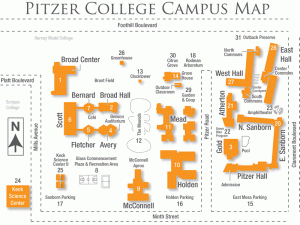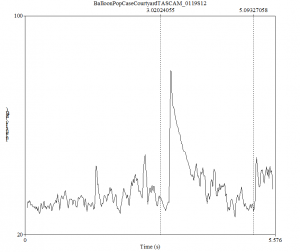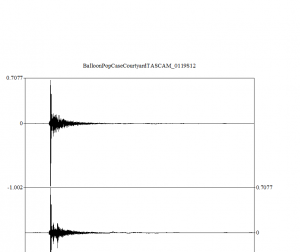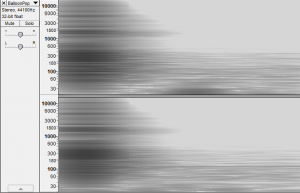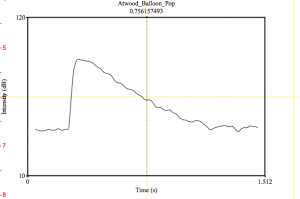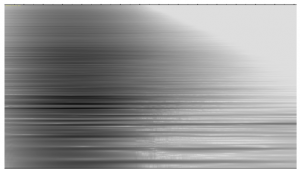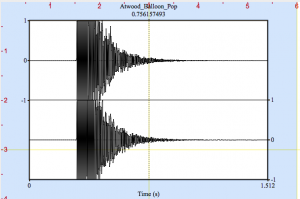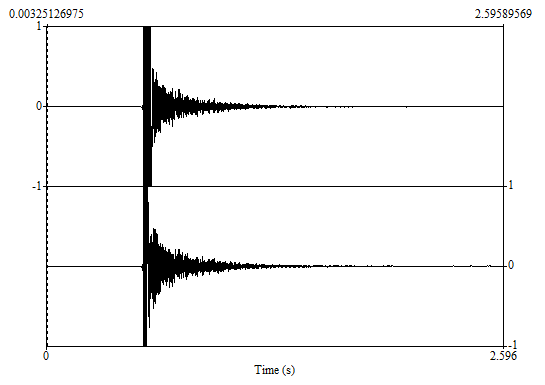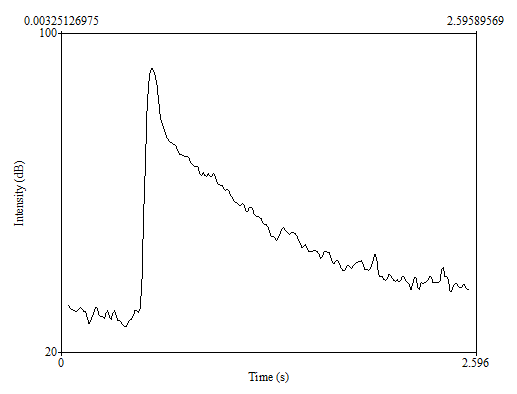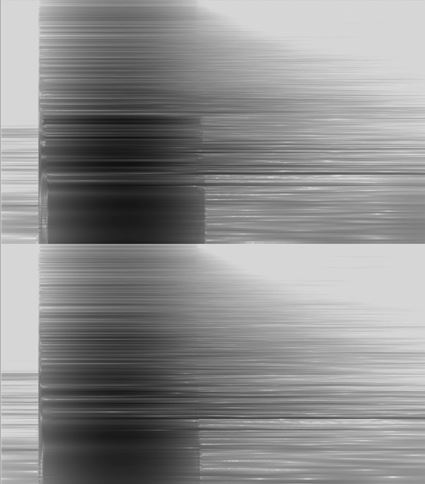Loading map...

Reverberation:
Mead Hall is located near the center of Pitzer College’s campus. Mead is build as four towers, connected by elevated walkways. The northwestern tower is named W and in clockwise order the other towers are named X, Y and Z. Mead is the oldest building on campus that houses students and the only elevator in the complex is located in Y tower. The elevator is dimly lit and smells of stale air. Above the door there are several empty bottles wedged between the light and the ceiling. The linoleum floor is chipped, the walls are imitation wood, and only decorated by a lone, empty cork board. Since the time of this recording the elevator has been refurnished with metal panelling and although it is arguably more aesthetically pleasing, it has broken several times and is frequently out of service.
Reverberation time:
30dB decay: .2 seconds
50dB decay: .5 seconds
60dB decay: .7 seconds
decay to background level: 2.9 seconds
Acoustic description:
For this recording I set up the TASCAM DR-40 recorder on the floor using the tripod for stability and held the balloon 3 feet in the air above the microphone. At 10:45am on march 31st residents of Mead’s Y Tower heard a loud BANG (3 actually since the first two popped prematurely)!!! I expected the small, enclosed space of the elevator to reverberate the pop for longer than it did. The spectrogram shows the high frequency decayed relatively quickly, by .8 seconds, compared to the low frequencies, which took 3 seconds. I know cork is a very absorbent substance, and it may have contributed to the quick decay. I imagine the mechanical workings of the elevator contributed to a slightly elevated baseline. The intensity graph shows a series of fluctuations in intensity which take place at the end of the decay and this could have been from the elevator’s many moving mechanics, or it could be a result of the space’s reflective sound qualities.
